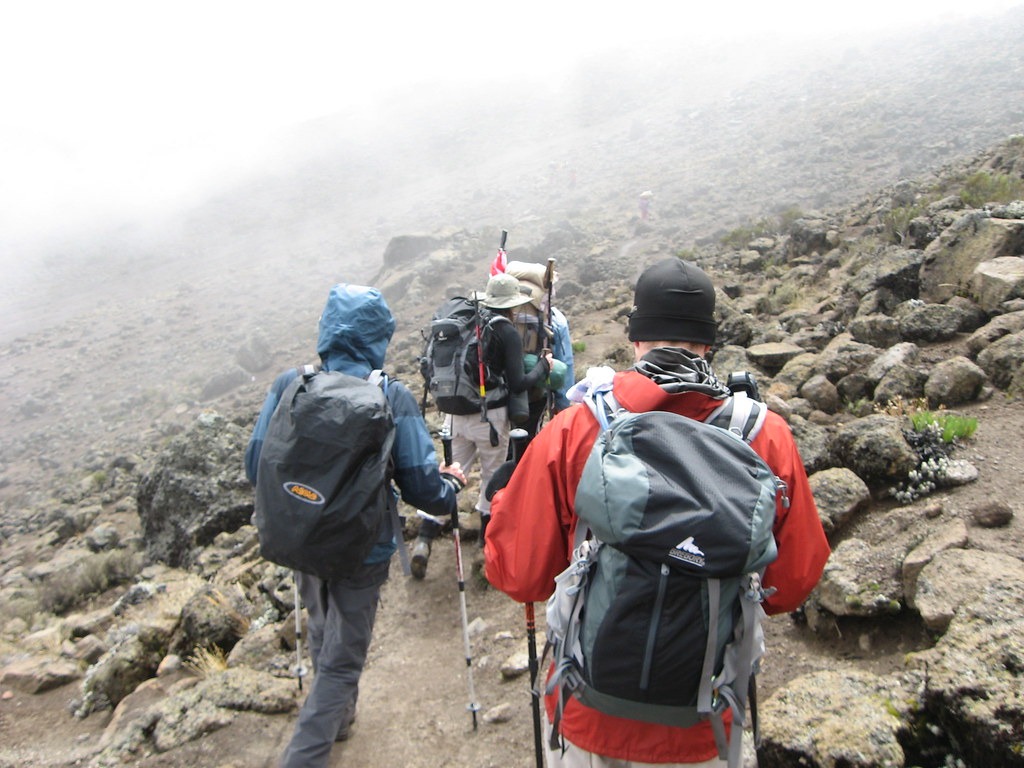Conquer the Roof of Africa: An SEO Guide to Trekking the Rongai Route
Mount Kilimanjaro, the majestic “Roof of Africa,” beckons adventurous travelers from across the globe. But with several routes to choose from, how do you decide which one is right for you?
The Rongai Route, known for its stunning scenery and off-the-beaten-path feel, might be the perfect fit for your Kilimanjaro ambitions. This SEO-optimized blog post will unveil the wonders of the Rongai Route, equipping you with the knowledge to plan your unforgettable trek.
Unveiling the Enchanting Rongai Route
The Rongai Route carves a scenic path up the northern slopes of Kilimanjaro, offering a unique perspective of the mountain compared to the more popular southern routes. Trekkers embark on a 6-day expedition, conquering diverse landscapes that transform from lush farmlands to otherworldly lunar terrain.
Captivating Campgrounds
- Simba Camp: Your Rongai adventure begins at Simba Camp, nestled amidst verdant rainforests teeming with exotic birdlife.
- Second Cave Camp: Ascend through picturesque moorlands, reaching the aptly named Second Cave Camp, where colossal rock formations provide dramatic backdrops.
- Third Cave Camp: Challenge yourself further, reaching the highest point on the Rongai Route – Third Cave Camp. Prepare for breathtaking panoramas encompassing the mighty Kibo peak.
- Kibo Hut: Onward to Kibo Hut, situated at the foot of Uhuru Peak, where the air thins and the anticipation for summit night crackles.
- Horombo Hut: Descend from the summit through lush rainforests, finding respite at Horombo Hut before returning to civilization.
Conquering the Summit: The Rongai Route Advantage
The Rongai Route is lauded for its gradual ascent, allowing for better acclimatization to the high altitude. This translates to a potentially higher summit success rate for trekkers compared to some steeper routes.
Beyond the Scenery: Unveiling the Uniqueness of the Rongai Route
- Off the Beaten Path: Experience a quieter trek, encountering fewer fellow adventurers compared to the more crowded southern routes.
- Cultural Encounters: Interact with local communities dwelling on the foothills of Kilimanjaro, gaining insights into their way of life.
- Diverse Wildlife: Keep an eye out for fascinating creatures like colobus monkeys and elands that inhabit the lower slopes.
Optimizing Your Rongai Route Trek
Planning is Paramount:
- Schedule: The dry season (December-March and June-September) offers the most favorable conditions for your Rongai escapade.
- Permits: Acquire climbing permits beforehand through the Tanzania National Parks Authority to avoid last-minute hassles.
- Guides: Enlist the expertise of certified guides to ensure safety and navigate the route’s intricacies with confidence.
Gear Up for Success:
- Clothing: Pack for a variety of temperatures, including thermals for the summit night and light layers for lower elevations.
- Hydration: Invest in a good hydration pack and constantly replenish fluids to stay energized throughout the trek.
- Acclimatization: Gradual ascent is key. Take your time, listen to your body, and enjoy the stunning scenery.
Embrace the Challenge, Savor the Triumph
The Rongai Route promises an unforgettable adventure, testing your physical and mental fortitude. With careful planning and the right frame of mind, you’ll be well on your way to conquering Kilimanjaro and etching your name in the legendary climbers’ hall of fame.
Itinerary
You will be picked up from your hotel in Moshi and transferred to the Rongai Gate (Nale Moru Gate), which is located on the northern side of Kilimanjaro, close to the Kenyan border.
The drive takes about 3 hours and includes a stop at Marangu National Park Gate to register for your climb.
From the gate, you will start trekking through maize and potato fields before entering a beautiful rainforest.
The hike to Simba Camp is about 7 kilometers (4.3 miles) and takes 3-4 hours.
Simba Camp is situated at 2,620 meters (8,600 feet) above sea level.
The hike from Simba Camp to Second Cave Camp is about 5.8 kilometers (3.6 miles) and takes 5-6 hours.
The trail climbs steadily through moorland terrain.
You will enjoy stunning views of the surrounding mountains, including Kibo (the highest peak on Kilimanjaro) and Mawenzi.
Second Cave Camp is located at 3,400 meters (11,150 feet) above sea level.
The hike from Second Cave Camp to Third Cave Camp is about 3.3 kilometers (2 miles) and takes 3-4 hours.
The trail continues to climb through semi-desert terrain.
You will see some volcanic rock formations along the way.
Third Cave Camp is located at 3,950 meters (12,950 feet) above sea level and is the highest campsite on the Rongai Route.
The hike from Third Cave Camp to Kibo Hut is about 6.7 kilometers (4.2 miles) and takes 4-5 hours.
This is the most challenging day of the trek as the trail is steeper and the altitude is higher.
You will enter into the alpine desert zone, where vegetation is sparse.
Kibo Hut is located at 4,700 meters (15,400 feet) above sea level.
This is the big day! You will wake up very early (around midnight) and start your ascent to the summit of Kilimanjaro.
The hike to Uhuru Peak, the highest point in Africa, is about 4 kilometers (2.5 miles) and takes 5-7 hours.
The trail is steep and challenging, but the views from the top are truly unforgettable.
After reaching the summit, you will descend back to Kibo Hut for a short rest and breakfast.
From Kibo Hut, you will continue down to Horombo Hut, which is located at 3,720 meters (12,200 feet) above sea level. The descent takes 5-6 hours.
The hike from Horombo Hut to Marangu Gate is about 20 kilometers (12.5 miles) and takes 6-7 hours.
The trail descends through rainforest terrain.
You will be met at Marangu Gate and transferred back to your hotel in Moshi.
The best time to climb Kilimanjaro is during the dry season, which is from December to March and June to September.
You will need to obtain a permit to climb Kilimanjaro. Permits can be obtained from the Tanzania National Parks Authority.
You will need to hire a qualified guide to climb Kilimanjaro.
Make sure you have the proper gear and clothing for the trek.
Be sure to drink plenty of fluids and eat plenty of food to stay hydrated and energized.

